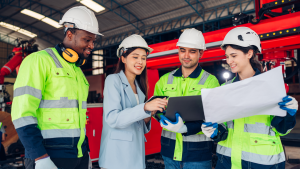For some time now, much has been said about a culture of excellence, a term deeply linked to the search for evolution and more results. However, this expression does not always come accompanied by other fundamental terms, such as “quality” or “continuous improvement.”
However, when addressing the role of quality and continuous improvement in this context, it is essential to understand how these fundamental elements shape and drive not only excellence but any search for improvement and results.
Thus, in our content today, we will demonstrate 3 inherent aspects of quality and excellence that need to be always in mind. These aspects not only motivate improvements but also need to be benchmarks for everything that is done.
If these 3 points are forgotten, any action taken can result in the opposite of what is sought, that is: bureaucracy, operational inefficiency, and above all, dissatisfaction of the stakeholders. Let’s go!
A Culture of Excellence Requires Performance Measurement and Analysis
William Edwards Deming, one of the quality gurus, used to say, “You can’t manage what you can’t measure!”, thus, any culture of excellence worth its salt starts with performance measurement and analysis.
In quality, we learn that one of its principles is decision-making based on facts and data, that is, information that has already been measured and analyzed. Only after understanding the measured scenario do we take actions. This, in itself, is the first step for any improvement or action.
Thus, Quality Management provides a variety of tools, devices, and guidelines that encourage and require correct measurement and assertive performance analysis. Even without talking about excellence, we are already exercising the search for points of improvement and defects. This is the basis for a system that evolves, that is, for a system that aims for a Culture of Excellence and incessantly searches for it.
Constant Process Modeling is Key to a Culture of Excellence
Another important principle of Quality Management is the process approach, or Process Management. Here, we understand that the company’s activities are organized and aligned in a logical and continuous process. This process, in turn, aims to transform raw materials, inputs, and resources into predetermined outputs (products or services).
In a true culture of excellence, we constantly seek to improve the products and services offered by the company. Making the connection, to improve the outputs, we need to improve the process that produces them. This requires constant changes and updates. In other words, we are “shaping the process” according to the insights obtained in the measurement and performance analysis.
By having a complete range of tools for mapping and improving processes, quality management becomes the best way to promote changes and seek operational excellence. By resorting to quality tools (such as PDCA and the Flowchart), companies promote excellence in a more organized and systemic way, influencing the results and the company’s own culture.
There is No Culture of Excellence Without Customer Focus!
By this point, we’ve understood how some of the most important principles of quality management are directly linked to continuous improvement and excellence. However, the most critical factor will always be the customer!
It’s futile to promote improvements that do not positively impact the customer, that do not foster loyalty, and that do not generate more business with our companies. Thus, we return to the most crucial quality principle: customer focus!
According to ISO 9001:2015, the global standard for quality management systems (QMS), the function of quality is to continuously increase customer satisfaction. Similarly, it’s pointless to excel in improving aspects not valued by the customer, which is not only a daunting task but also meaningless.
Therefore, placing our esteemed customer at the center of all decisions and processes is a vital characteristic for any culture of excellence. Understanding the needs and expectations of this particular stakeholder is essential to offering high-quality products or services, increasing revenue, and ensuring the much-desired business sustainability, meaning more profits!
Quality Management – A Fundamental Pillar for Continuous Improvement and the Culture of Excellence!
After everything we’ve discussed, it’s easy to see how quality is an undeniable requirement of excellence. By combining the principles listed here, the connection becomes clear, as follows.
By valuing performance measurement and analysis, a company not only identifies areas for improvement but also gains a precise understanding of customer needs and expectations. This approach, in turn, allows not only for process optimization but also for constant adaptation to meet market demands and the ongoing crises we face.
Directing all organizational aspects, customer focus is the compass that guides actions towards excellence, ensuring that each improvement implemented adds value – and even more importantly: perceived value – for those who consume what the company offers.
Wrapping everything up with a golden key, process management plays a crucial role in strategically shaping and refining every step of the operation, aiming to offer superior products and services that truly meet the needs identified by customer focus. Everything fits and interdepends in an organic and optimized way, creating a stronger and more assertive company.
In summary, the pursuit of excellence in any organization is deeply intertwined with quality and continuous improvement. Any company trying to achieve excellence without a foundation in quality is doomed to fail!
And you, the reader, seeking a true culture of excellence aligned with international standards of quality and management, can count on QMS Certification, whether for auditing ISO management systems.
We are committed to supporting you on this journey of continuous improvement, ensuring not only compliance with ISO requirements but also the strengthening of an organizational culture aimed at excellence. Together, we can drive your business towards sustainable success, incredible results, and complete customer satisfaction!











